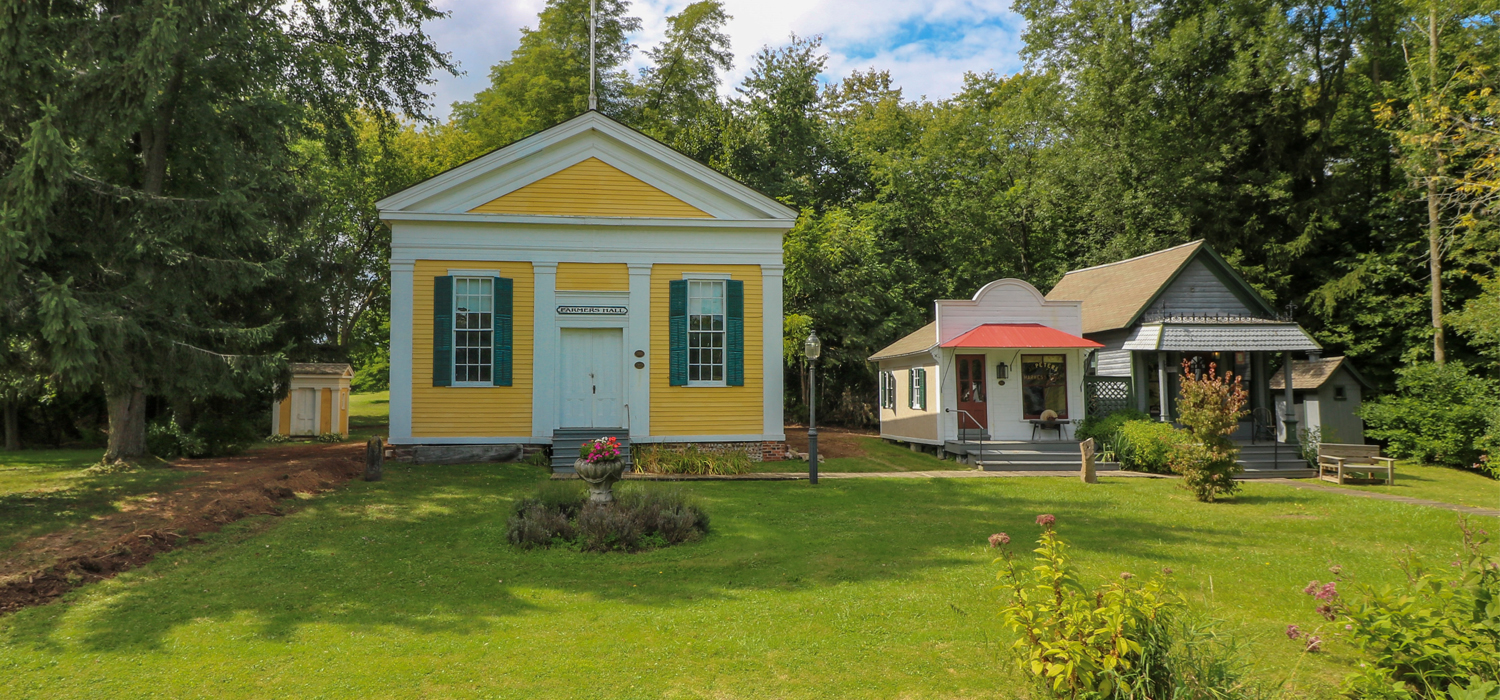Childs – National Register Historic District Project
Background
In the summer of 2022, the Cobblestone Museum hired The Landmark Society to complete a National Register of Historic Places historic district nomination for a portion of the hamlet of Childs. This project was made possible by a Preserve New York grant.
Preserve New York is a signature grant program of the New York State Council on the Arts and the Preservation League of New York State. Preserve NY is made possible with the support of the Governor’s office and the NYS Legislature, with generous additional support from The Robert David Lion Gardiner Foundation.
Preliminary Childs Historic District boundaries
Please note that these boundaries are subject to change.
More info
What is the National Register?
The National Register of Historic Places is the official list of historic properties that have been recognized as significant in American history, architecture, archaeology, engineering, or culture. It is an honorary program and does not place restrictions on private property owners. Think of it as the honor roll for old buildings.
The NY State Historic Preservation Office (SHPO), housed under the NYS Office of Parks, Recreation & Historic Preservation, coordinates the National Register program in New York State.
What is a historic district?
Properties can be listed in the National Register as individual buildings/structures or as historic districts. Districts are groupings of properties such as residential neighborhoods, commercial downtowns, and industrial complexes. District boundaries are drawn based on a number of factors, most importantly the history of the area and the “historic integrity” (how intact the historic appearance is) of the buildings within the proposed boundaries.
Does this mean I won’t be able to make changes to my home/building?
Simply put—No. The National Register does not restrict what private property owners can do to their properties. In fact, as long as state/federal funding or permits are not being used, a property owner can demolish a building that is listed in the National Register. Protection only exists when state and/or federal money and/or permitting is involved in a project. The most common such occurrence is when a Department of Transportation is reconstructing or widening a roadway.
If you choose to take advantage of the historic tax credit programs, the State Historic Preservation Office will have to review your proposed work. If you do not choose to utilize this financial incentive, the State does not review changes to your property.
What are the benefits of National Register listing?
- Access to the tax credit programs
- Build community pride
- Recognizes and documents your community’s development and history
- Marketing tool for attracting residents, businesses, and visitors to your community.
How can I save money on repairs to my home?
The NYS Historic Homeownership Rehabilitation Tax Credit program offers a state income tax credit equal to 20% of qualified rehabilitation expenses associated with repair, maintenance, and upgrades to historic homes. Your home must be a contributing structure to the historic district, must be owner-occupied, and you have to spend a minimum of $5,000 (you can add up multiple projects over multiple years), with at least 5% of total costs on the exterior of the home. To utilize the tax credit program, homeowners must complete an application and receive approval from NY SHPO before performing the work.
Qualifying expenses can include repair and/or replacement of:
- Roofs, including roof coverings, rafters, fascia, soffits, gutters and downspouts
- Structural systems, including foundations, floor joists and ceiling and attic rafters.
- Utility systems, including heating, ventilation, air conditioning, electrical and plumbing systems as well as fire safety and security systems.
- Windows and doors, including glass, frames, shutters, hardware and storm windows.
- Exterior walls, cornices, porches and foundations, including siding, dormers, brackets, columns, railings, stairs, window and door trim, concrete or masonry walls and chimneys.
- Weatherproofing, including caulking, weather-stripping and some insulation upgrades.
- The credit does NOT apply to work outside the footprint of the house, such as new additions, landscaping, driveways, fencing, or detached garages.
Besides the Homeowner tax credit program, there are also:
- State and Federal programs for income-producing properties undergoing a substantial rehabilitation
- NYS Historic Barn Rehabilitation Tax Credit for any barn built prior to 1946 (National Register listing not required)
>>Click here for more information on historic tax credit programs through the NY SHPO.
Next Steps
On March 20, 2023, the Cobblestone Museum and The Landmark Society held an informational public meeting at the former Tillman’s Inn. Click here to view a PDF of the slides presented at that meeting.
National Register Historic District nomination process:
- Landmark conducts research & fieldwork - January-May, 2023
- Submit draft nomination to Cobbleston Musem & NY SHPO - Early June, 2023
- Make revisions as needed - Summer 2023
- NY SHPO schedules nomination for State Review Board & mails notification letters to property owners within district - anticipated Summer 2023
- NY SHPO & Landmark hold public meeting - anticipated Summer 2023
- After State Review Board approval, SHPO forwards nomination to National Park Service



